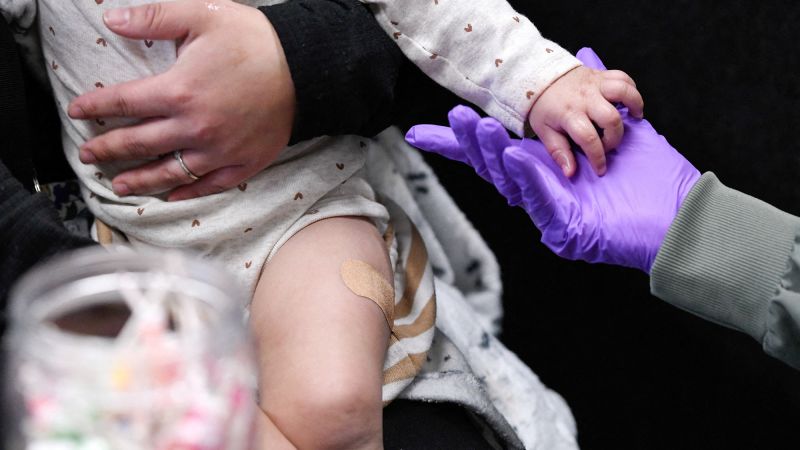Sign up for the Slatest to get the most insightful analysis, criticism, and advice out there, delivered to your inbox daily.
Here’s what I have to say about the common cold: It sucks. The symptoms are uncomfortable, and they can come for you multiple times a year. If you’re lucky enough to not get too sick, you get the unique misery of getting all your normal work done while buried under a mountain of tissues and the mental refrain How did I ever forget how wonderful life is when you don’t have a runny nose? The common cold isn’t just a nuisance, though. It carries significant economic effects, causing an estimated $40 billion in losses in the U.S. each year from health care costs and missed work days. And for many people with underlying respiratory illnesses like asthma or chronic obstructive pulmonary disease, aka COPD, it poses a serious threat in the same way that flu, COVID, and pneumonia are more deadly in vulnerable populations.
Despite regularly meeting the cold on the front lines, we have relatively few weapons to fight it. There’s a litany of cough syrups, but many are outright ineffective. Vitamin C might shorten the length of a cold, but it won’t prevent one. Antibiotics do nothing to fight viruses (and they do lead to antibacterial resistance). And, of course, there’s no cold vaccine, while you can go get a protective flu or COVID jab when fall weather rolls around. All you can really do is wash your hands a lot and prepare to grit your teeth through the eventual infection.
Why are we so ill-prepared for the common cold? It’s not because the common cold has been neglected by scientists or vaccine manufacturers, but because it’s actually a really wily opponent. If researchers in the field “thought that a vaccine was something that could be achieved, they would already have done it,” says Sebastian Johnston, a professor of respiratory medicine and allergy at the National Heart and Lung Institute at Imperial College London and a world expert in respiratory medicine research.
For the past 18 years, Johnston has been working on achieving exactly that. And he thinks we’re close(ish) to the next step. I reached out to him to learn the latest. Our conversation has been edited and condensed for clarity.
Slate: Can you give us a little background as to why the common cold is a particularly difficult nut to crack?
Sebastian Johnston: The basic reason is the sheer number of different viruses that cause common colds. Pretty much any respiratory virus can cause a common cold. Some of those already do have vaccines, like influenza, COVID, and RSV. But they’re generally reserved for more vulnerable populations, like older people and people with comorbid conditions.
While any respiratory virus can cause a common cold, the biggest family are rhinoviruses—I would say probably three-quarters to four-fifths of common colds are caused by a rhinovirus infection. And the reason there is not a rhinovirus vaccine is because there are about 180 different rhinoviruses circulating, and they’re all distinct from each other. To get a vaccine that covers 180 different viruses is technologically extremely challenging.
How have you been tackling that challenge in your own research?
Our aim has been to develop a vaccine that works through T-cells rather than antibodies. Humans have multiple arms of our immune systems that protect us against infections. Antibodies are very important, and producing antibodies against individual viruses is probably the most important thing that protects us against infections. But the problem with antibodies for rhinoviruses is that they don’t cross-react from one virus to another, so you’d need a vaccine with 180 different virus proteins in it to produce an effective antibody-producing virus.
Then there are T cells, which are also part of the cellular immune response to infection. They have antiviral activity by themselves, but they also promote antibody production by stimulating the cells that produce antibodies. [We found that] if we promoted T-cell responses against rhinoviruses, that would cross-react among all 180 different rhinoviruses, and they would both have antiviral activity through the T cells themselves and also boost antibody production against those viruses through the T cells.
Sounds like a good idea to me! Has it worked?
What we’ve shown in mice and monkeys is that you can induce T-cell immune responses to a broad range of rhinoviruses—we’ve studied about 20 of them, which are pretty representative of the entire 180—and get very strong immune responses. We boost antibody production, and we clear virus faster. So everything that we’re seeing in mice and monkeys is telling us that it ought to work in man. But we haven’t yet shown that.
What will that entail?
We’re working with Apollo Therapeutics, who are committed to going into safety testing and then seeing whether it works in people by doing clinical trials. We hope that those studies will start later this year or early next year. We’re going to start with people with a chronic lung disease called COPD, because when they get a rhinovirus infection, they frequently end up in hospital, and so the cost [to the health care system] is obviously much higher than people getting common colds. If it’s successful in COPD, we would probably then broaden it to other chronic respiratory diseases like asthma and other chronic lung diseases. If it’s successful in those, we’ll probably broaden it to older people and immunosuppressed populations. And eventually, if it’s very safe and the cost has come down sufficiently to justify using it for the common cold, I see no reason why it shouldn’t eventually be used for the common cold.
Any idea how long that could take?
Once Apollo has done their safety tests, they would then commit to testing whether it works or not, and we would probably look to get an answer a couple of years down the line. They’re quite long-duration studies, because you have to wait for naturally occurring colds to happen in the population that you’re studying. And then from there it usually does take some years to manufacture.
The COVID-19 pandemic gave a huge push to mRNA technology research over the last several years. Has that sped up the prospect of a rhinovirus vaccine at all?
It did give a boost. But it hasn’t changed what we’re doing in any major way. We did look at developing an mRNA vaccine for rhinoviruses, but in the end, we decided to go with a protein vaccine with an adjuvant. That’s the standard approach for most vaccines, because the antibody responses that you get are actually stronger with a protein and an adjuvant than with an mRNA.
You’re based in the UK, but I’m sure you’ve heard about the attack on vaccines happening across the pond. Has that affected your work at all?
It hasn’t touched the UK in the same way, but a lot of drug development occurs in the United States, and a lot of clinical trial centers are in the United States, so I expect it has impacted Apollo’s thinking about where they want to do their studies. Obviously we don’t consider it to be a good thing. But there’s not much we can do to influence it at the moment, other than provide good data showing that it works. That’s the best answer.
OK, so we can’t yet prevent the common cold. Are we getting closer to better treatments?
Developing antivirals is something that many companies have tried, but so far, there is not a rhinovirus antiviral that is licensed and available for use. There was one that got quite a long way, but unfortunately it was found to interact with other drugs, and ultimately it was not approved.
There is another drug called Vapendavir that looks promising. We recently carried out a study giving rhinovirus infection to people with COPD to induce a worsening of their COPD—so, mimicking the attacks that happen in the natural setting—and I’m happy to say that it gave positive results. We reduced symptom severity; we sped up time to recovery; we reduced virus loads; we showed reduced inflammation in markers of inflammation in the blood; and we improved lung function. So all of those were positive outcomes, and the company that licensed it is currently looking for investment to do a large clinical trial.
In the meantime, what are your own personal tips for dealing with a cold?
To be honest, I do nothing. I’m lucky that I’ve got, I think, good antiviral immunity—most of my colds are mild. But if I had a significant cold, I’d take some paracetamol. And if I were a vulnerable person who got ill, I would take First Defence, or one of those sprays that has been shown to shorten the illness duration by about a day, because that’s better than another day being ill.
Also, echinacea is a pretty harmless herbal treatment that does appear to have significant protection. I started off pretty skeptical about echinacea, but actually, I’m an author on studies showing that echinacea reduces antibiotic usage by about 70 percent in children if they use it as a prophylaxis. Antibiotic use is driven largely by common colds, which produce secondary bacterial things like sore throat, earache, nasal congestion, sinusitis.
Final word: Fair to hold on to hope for a common cold vaccine in our futures?
I’m full of optimism. I’m wishing things could move a little faster, because I’m confident that things are developing in the right way, and that we will have a vaccine and treatments for rhinoviruses and other common cold viruses before too long.



